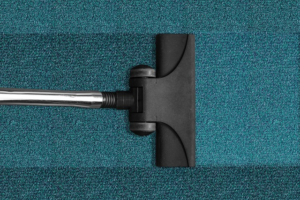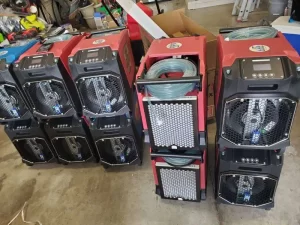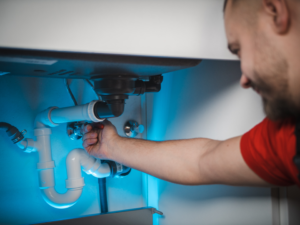Tips for Dealing With A Sewage Backup
There are few things worse than facing a sewage backup as a homeowner. Whether you discover a flooded basement, bathroom, kitchen, or other rooms that can be affected by sewage water, there is a complex sewage backup cleanup and restoration process on the horizon if you want to return the property to normal.
Your first consideration should be to contact a restoration company like Flood Kings. Our team has the experience necessary to tackle this complex job and save as much of your property as possible. Contact us for a free estimate so we can get started on cleanup as soon as possible.
Common Causes of a Sewer Backup
There are several circumstances that could cause a sewage backup on your property, and understanding these severe threats could help you prevent the problem in the first place.
Clogged Sewer Lines
One of the most common causes of sewage backups is clogged drains or sewer lines. A buildup of debris reduces the rate of water flow, causing a sewage backup when it becomes too much for the pipes to handle or if there is a complete blockage. Things that can contribute to clogged pipes include hair, oil, grease, paper towels, feminine products, excrement, diapers, and other solid waste.
Old/Damaged Sewer Lines
Older homes tend to have cast-iron or clay piping as part of their sewer systems. These materials do not last forever and are prone to corrosion, which can cause holes to form in the main sewer lines of your home. This can compromise water flow, resulting in a sewer backup.
Overgrown Tree Roots
That’s right, the trees on your property could be the cause of your sewage backup cleanup cost. Older pipes in particular are vulnerable to roots that have grown into or around the structures of your sewer system, causing punctures or squeezed pipes to affect drainage from your home.
Heavy Rain
Many homes are connected to public sewer systems, and when there is a lot of rainfall, these systems could fail, creating contaminated water backup issues for residential buildings.
What To Do Right After a Sewage Backup Occurs
Knowing how to respond to sewer water entering your home is crucial to protecting yourself, your family, your possessions, and the home’s structural integrity. Follow these steps to effectively prepare for the sewage backup process for cleaning.
Evacuate the Room
The affected area will have both contaminated water and contaminated air. This makes it dangerous for anyone to breathe it in or have it come into contact with their skin. Clear everyone and every pet out of the contaminated room as quickly as possible.
Reach Out to Professional Contractors
A backup in your sewer results in a very complex cleaning and repair process. Attempting to go through the steps yourself could result in a subpar result. This might mean expensive repairs in the future or a dangerous living environment. When you bring in professionals like Flood Kings, you are improving the chances of your property being saved and restored to normal.
Ensure Safety
Safety is priority number one when a sewage spill occurs, and there are several steps you must take to mitigate the risks associated with this type of disaster. First, wear personal protection gear when entering the space like boots, rubber gloves, face masks, and eyewear. The less you can expose yourself to the contaminants, the better. Additionally, if it is safe to do so and there is no sewage water near the circuit breaker, try to shut off the power to the affected rooms. Also, shut off the main valve for the home’s water supply if you can access it. If not, contact the utility companies to do so for you.
Ventilate
Air circulation will be critical at this stage, so open up windows to try to ventilate the area as much as possible after a sewage backup. However, do not turn on the air conditioner as it can spread the contaminated air throughout the home.
Disinfect Standing Water
Before getting started with the full sewage cleanup, you can mitigate the spread of bacteria and viruses by adding small amounts of chlorine bleach to any pockets of collected water.
Contact Insurance Company and Municipal Authority
The time has come to notify both your insurance carrier and the municipal authority if your home is connected to public or city sewer lines. Discuss your coverage policy and see what might fall under the umbrella of your policy before proceeding with a costly sewage backup cleaning project.
Additionally, document everything that you can regarding the damage and the repairs made. Flood Kings can provide much of the documentation you’ll need for an insurance claim if you choose to work with our experienced team.
The Dangers of Breathing in Sewage
Breathing in sewage can be incredibly dangerous. It is full of bacteria and viruses that can cause health hazards like sinus infections, bronchitis, pneumonia, and even death in extreme cases. This is why it is so important to wear a respirator and other protective equipment before cleaning up the mess, or just hire professionals to protect yourself from these risks completely.
How to Conduct a Thorough Sewage Cleanup Yourself
You have taken the immediate steps necessary to prepare for cleaning. If you have decided to tackle this sewage cleanup yourself, then you must know the following steps to ensure that the room is returned to a safe condition and the air quality is restored.
Wear Protective Gear
As mentioned previously, safety is crucial when dealing with the harmful chemicals that are present in sewer backup situations. Even the cleaning agents themselves could be dangerous to breathe in over a long period. To take care of your health during this dangerous job, wear rubber boots, rubber gloves, a respirator, and a full face mask to prevent as much exposure as possible.
Drain the Water
Extracting the collected water is the first step in effective sewage cleanup. This can be done with the use of buckets, mops, wet vacuums, sump pumps, or anything else that can get rid of the water. If you do use towels or something else to soak up the water, dispose of them in thick plastic bags. Also, it might be wise to ask local authorities where you can drain this water because there are probably strict standards involved.
Remove Debris and Dirt
Sewage backups usually leave a fair amount of dirt and debris behind once the water has been removed. This sludge should not be touched and needs to be disposed of. Consider using shovels and trash bags to pick up and dispose of this debris. It may also need to be wiped off of the walls and other surfaces in the room. Check for mold growth to wash away as well during this stage.
Wash Surfaces
An initial washing of the surfaces in the area comes next. You can do so using rags or sponges along with low-suds detergent or antibacterial soap and hot water. This combination is effective at cleaning the majority of the items that have been impacted by the water. Once washing is complete, rinse off these surfaces to clear the hot water and soap solution.
Sanitize
The job is not done yet, as mild detergent may not have removed all the dangerous substances from the walls, floors, ceilings, or other materials after sewage backups. A chlorine bleach solution of one cup in a gallon of water can eliminate the bad odor and the harmful chemicals left behind by the sewer backup. Baking soda is another option. This solution can also be used for cleaning carpets, linens, clothes, and other possessions that were impacted by the sewage backup.
Wash and Dry Affected Possessions
Ideally, you would have removed all possessions from the contaminated area early on, whether they were impacted by the mess or not. Cleaning these items separately, potentially outside, can help the drying process for the room itself go quickly. As mentioned previously, you can use the bleach cleaning solution on some of these items, such as upholstered furniture, though you should make sure it will not ruin them.
Dry Out the Space
With all the cleaning done, you will want to dry out the affected rooms. Circulation and ventilation are important during this stage, so open windows and doors in both the slightly affected spaces and the directly affected areas. Additionally, you should plug in some air movers, fans, and dehumidifiers to help dry out the room and pull the water droplets out of the air and surfaces. The items that you have cleaned and plan to salvage should be left outside in the sun to air dry.
Dispose of Contaminated Items
During the cleanup process, there are many items that you have used to scrub, wash, dry, and otherwise clean your possessions. Many of these items should be disposed of in heavy plastic bags to prevent the spread of germs. Any unsalvageable carpet, padding, clothing, furniture, or other items must be thrown away properly.
Have Electrical Components Checked
This step could end up saving your life or at least your bank account. Any electrical appliances or components that may have been in direct contact with the water before deep cleaning took place should be inspected by a professional. Attempting to use them without professional help could result in an electric shock, a fire, or a ruined appliance.
Replace Structural Elements
Significant property damage can occur when water is exposed to structural materials, especially if that water came from the sewer line. If building materials were ruined beyond repair, then they will need to be replaced to maintain the integrity of the building. This may include drywall, flooring, wood framing, plaster, brick, or concrete. Professionals from a restoration company can help you accomplish this task if it is too much to handle on your own.
Preventing Future Sewer Backup Issues
After a long and potentially expensive process, you might finally be finished with returning the property to normal after a sewage backup. Even if you paid for sewage backup cleaning services, the last thing you want to do is face this problem in the future. To avoid further incidents, here are a few strategies to prevent another sewer backup from occurring.
Invest in a Sump Pump
Sump pumps can be your best defense against sewage backups. They automatically start pumping water out of the house when it enters the sump basin in your basement. Unfortunately, a bad sewage spill can cause the pump to fail. If your home does not have a pump, invest in one now. If there is a pump in the basement, invest in regular maintenance to ensure it runs when it needs to. You can purchase filter fabric and a flat brick to better protect the sump pump from sewage spills.
Have Pipes Inspected Regularly and Update Them if Needed
Since sewer line pipes are often the root cause of plumbing problems, taking care of them is crucial. Regular inspections of your pipes can help you know when to replace them with new plastic pipes or insulate them properly.
Never Flush Anything Other Than Toilet Paper
Often, the sewage backs up when clogs form because of solid objects being flushed down a toilet when they should be thrown out. All you have to do is focus on only flushing toilet paper down the toilet and you should be able to this problem.
Dispose of Oil and Grease Properly
Never pour cooking oil or grease down any of the sinks in your house. Put them in a heat-resistant container until they cool down and then dump them in the trash instead.
Cut Back Tree Roots Near Main Line
If there are any trees near the sewer lateral buried underground, try to keep up with cutting back the tree roots nearby if possible. Better yet, make sure no trees are planted near these pipes in the first place.
Flood Kings is the Solution You Need
Overwhelmed by the task of cleaning and restoring your property have a sewage backup? Contact the experts who have decades of experience and the right tools to get the job done right. We will properly wash all areas to ensure that harsh chemicals are eliminated after a sewage backup.
No matter the source of the sewage backup or the extent, our experienced professionals can return your home to its pre-loss condition. Get in touch with our emergency services at 615-477-9968 as soon as possible.








